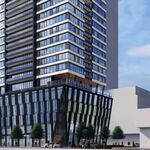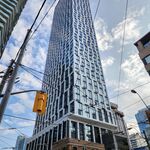Rainforest
Senior Member
About the same that the Sheppard East subway would be overcapacity the first year.
Which is near zero. 20-years later76 cars is more than enough to carry far more than predicted. Metrolinx says with 76 cars than can run every 190 seconds. That's 19 trains a hour (in each direction). If you guestimate a capacity of 400 per (two-car) train, that's 7,600 each hour. The predicted 2031 ridership was about 5,000 an hour - before Covid.
If somehow they have completely blown it, they can always replace service between Don Mills and Kennedy with buses, and push the trains to 3 cars, increasing capacity to 10,000 an hour.
I believe, even the surface sections Don Mills - Kennedy and Brentcliff - Leslie are designed to allow 3-car trains. The street blocks are very long on that section of Eglinton, it should be possible to fit long surface stops. They might not need to replace anything with buses.
Of course, that assumes that the line opens sometime in the 2020s.
We can't, but there's years to order additional cars to lengthen the trains from 62 metres to 93 metres. And frequencies can get much higher.
At full capacity, they should be able to get over 20,000 an hour between Don Mills and Pearson; and the Don Mills to Kennedy section is no where near the peak point. If they break 20,000 one day, time to build an additional east-west line somewhere.
Not sure about 20,000 an hour, the estimates for the capacity limit I've seen are 13,500 to 15,000. It is not just what the trains can carry, but also what the station platforms and escalators / stairs can handle.
Though, even 15,000 should be enough for a while.




